#Anastasia Mikhailovna
Explore tagged Tumblr posts
Text

Wedding postcard of Crown Prince Wilhelm of Prussia and Cecilie of Mecklenburg-Schwerin.
Cecilie's father had already passed away but her Romanov mother, Anastasia Mikhailovna, is shown on the right.
#romanov#prussian royal family#anastasia mikhailovna#cecilie of mecklenburg-schwerin#crown prince wilhelm#kaiser wilhelm ii#augusta victoria of Schleswig-Holstein#mikhailovichi#my collection#weddings
14 notes
·
View notes
Text
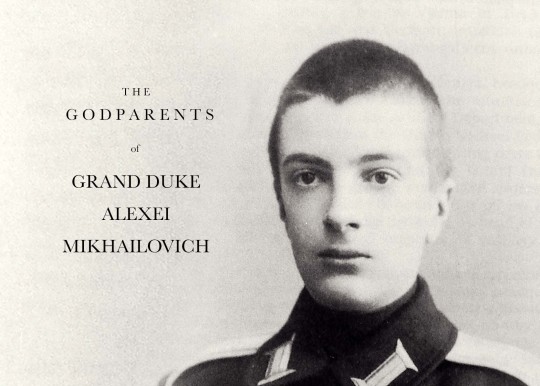
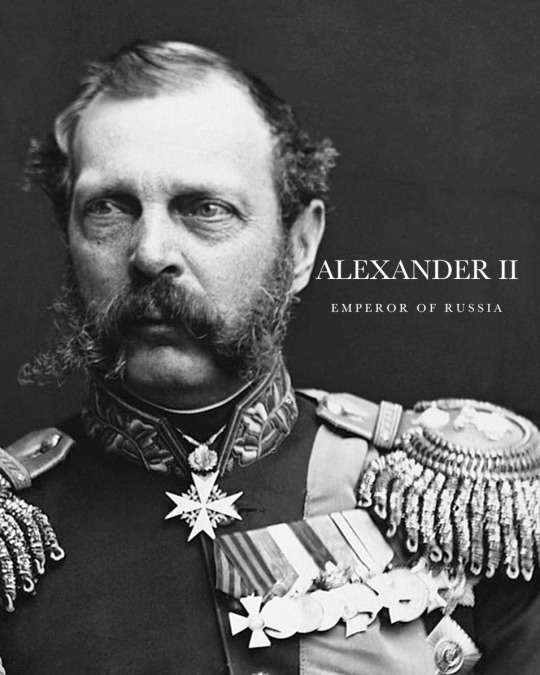
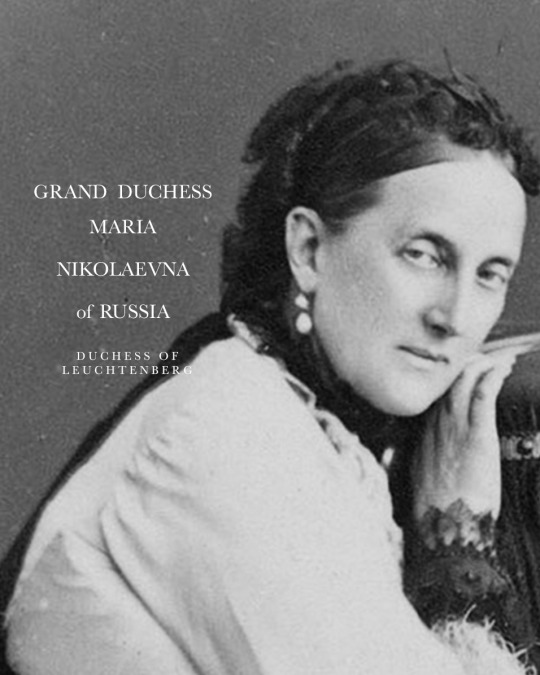
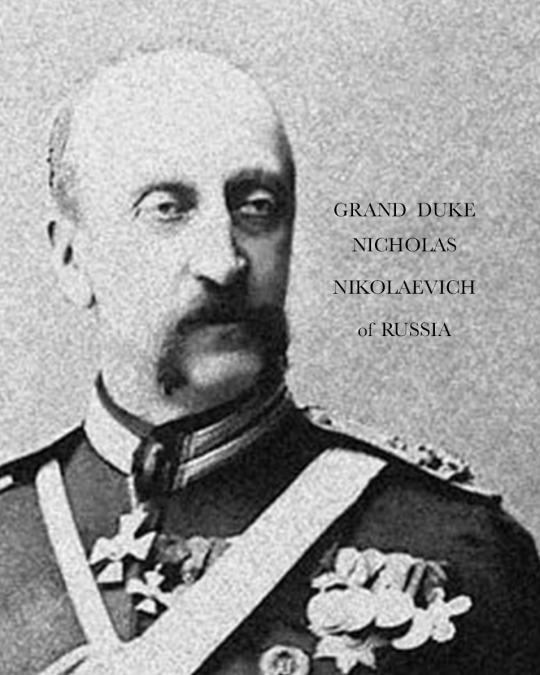

GODPARENTS OF GRAND DUKE ALEXEI MIKHAILOVICH
Grand Duke Alexei Mikhailovich was born on 28 December 1875 in Tbilisi, Tbilisi Governate, Russian Empire (now Georgia). He was the the sixth son and youngest child of Grand Duke Michael Nikolaevich of Russia, himself the youngest son of Emperor Nicholas I. He was the only Grand Duke to bear the name and patronymic of a Tsar: Alexei Mikhailovich. On 11 January (New Style) 1876, he was christened at Tbilisi by the Palace Priest and Confessor of Their Imperial Highnesses. He had seven godparents, as listed:
ALEXANDER II, EMPEROR OF RUSSIA - his uncle, the Russian Emperor stood as one of the godparents. He became the Emperor of All Russia in 1855. Alexander’s most significant reform as emperor was the emancipation of Russia’s serfs in 1861, for which he is known as Alexander the Liberator.
GRAND DUCHESS MARIA PAVLOVNA OF RUSSIA, GRAND DUCHESS CONSORT OF SAXE-WEIMAR-EISENACH - his aunt was one of his godparents. One of the daughters of Emperor Paul I, the grand duchess married a German prince Karl Friedrich, Grand Duke of Saxe-Weimar-Eisenach in 1804. She was an intellect, interested in both arts and sciences. German poet and novelist Johann Wolfgang von Goethe hailed her as one of the worthiest women of his time. She was the great-grandmother of Wilhelm II, German Emperor and Queen Victoria of Sweden.
GRAND DUKE NICHOLAS MIKHAILOVICH OF RUSSIA - his uncle, was one of his godparents. Trained for the military, as a Field Marshal he commanded the Russian army of the Danube in the Russo-Turkish War, 1877–1878.
GRAND DUCHESS MARIA PAVLOVNA OF RUSSIA - known as 'Maria Pavlovna the Elder', was the wife of his first cousin Grand Duke Vladimir Alexandrovich, and stood as one of his godparents. Born as Duchess Marie of Mecklenburg-Schwerin, her ancestors included Emperor Paul I of Russia. Upon her marriage to the grand duke, she became a prominent hostess in Saint Petersburg.
GRAND DUKE ALEXEI ALEXANDROVICH OF RUSSIA - his first cousin and namesake, one of the sons of Emperor Alexander II, was one of his godparents. Chosen for a naval career, Alexei Alexandrovich started his military training at an early age. By the age of 20 he had been appointed lieutenant of the Imperial Russian Navy, eventually becoming general-admiral.
GRAND DUCHESS ANASTASIA MIKHAILOVNA OF RUSSIA, GRAND DUCHESS OF MECKLENBURG-SCHWERIN - his sister, was one of his godparents. In 1879, when Alexei Mikhailovich was only four years-old, his only sister married a German prince, Friedrich Franz III of Mecklenburg-Schwerin (the elder brother of Grand Duchess Maria Pavlovna the Elder). Their children included Queen Alexandrine of Denmark and Crown Princess Cecile of Prussia. She was a strong-willed, independent and unconventional woman. She never became used to her new country where she was unpopular.
GRAND DUKE MICHAEL MIKHAILOVICH OF RUSSIA - one of his older brothers stood as another of his godparents. As Romanov tradition demanded, he followed a military career. He served in the Russo-Turkish War in 1877, became a Colonel and was adjutant at the Imperial court. In 1891 he contracted a morganatic marriage with Countess Sophie von Merenberg, a morganatic daughter of Prince Nicholas William of Nassau and a granddaughter of the Russian poet Alexander Pushkin. For contracting this marriage without permission, their first cousin Emperor Alexander III stripped him of his military titles and banished the couple from the Russian Empire. Alexei Mikhailovich never saw his brother again after his banishment.
Source
#alexei mikhailovich#romanovs#history#alexander ii#maria pavlovna the younger#maria nikolaevna#nicholas nikolaevich#alexei alexandrovich#anastasia mikhailovna#michael mikhailovich#godparents
26 notes
·
View notes
Text

Countess Anastasia Mikhailovna de Torby, daughter of Grand Duke Michael Mikhailovich of Russia, by Galeota-Russo.
49 notes
·
View notes
Text

Portrait of Anastasia Mikhailovna de Torby, Philip de László. 1913.
#aesthetic#art#art history#fashion#historical fashion#historical art#women in art#women#1910s#de laszlo#Anastasia#Anastasia mikhailovna de torby#Romanov family#Romanovs#morganatic romanovs#imperial Russia#Anastasia wernher#Russian royals#British aristocracy#yellow aesthetic#edwardian aesthetic#Edwardian fashion#Edwardian era
227 notes
·
View notes
Text

#Anastasia Mikhailovna de Torby#countess#socialite#lady wernher#1900s#1917#philip de lászló#art#painting#anastasia
16 notes
·
View notes
Text
𝙲𝚑𝚘𝚌𝚘𝚕𝚊𝚝𝚎 𝚌𝚊𝚛𝚍𝚜 𝚘𝚏 𝚁𝚘𝚢𝚊𝚕 𝚠𝚘𝚖𝚎𝚗 👑✨🍫
(𝙿𝚊𝚛𝚝 𝟺 𝚘𝚞𝚝 𝚘𝚏 𝟺)
~~~~~~~~~~~~~~~~~~~~~~~~~~~~~~~~~~~~~~~~~~~~~~~
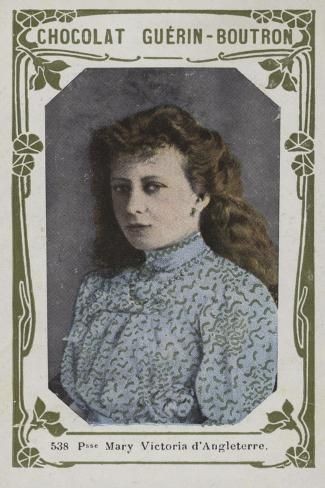
Princess Mary, Countess of Harewood and Princess Royal.
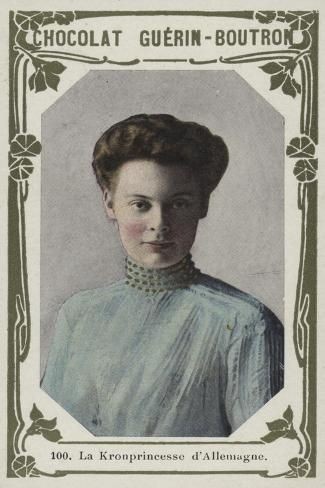
Crown Princess Cecilie of Prussia, née Duchess Cecilie of Mecklenburg-Schwerin.
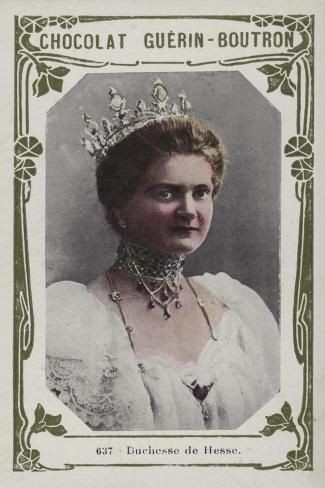
Grand Duchess Eleonore of Hesse, née Princess Eleonore of Solms-Hohensolms-Lich.
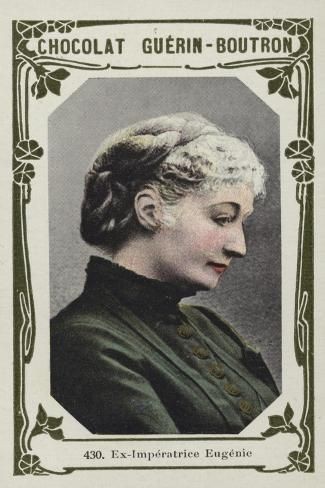
Empress Eugenie of France, née Eugenie de Montijo.
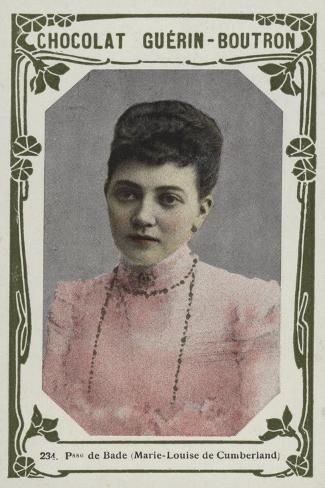
Princess Marie Louise of Baden, née Princess Marie Louise of Hanover.
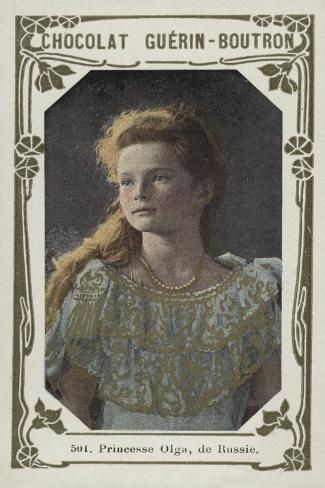
Grand Duchess Olga Nikolaevna
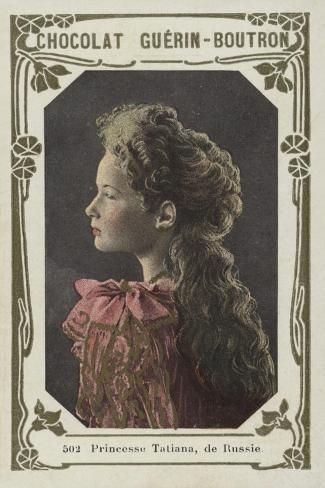
Grand Duchess Tatiana Nikolaevna
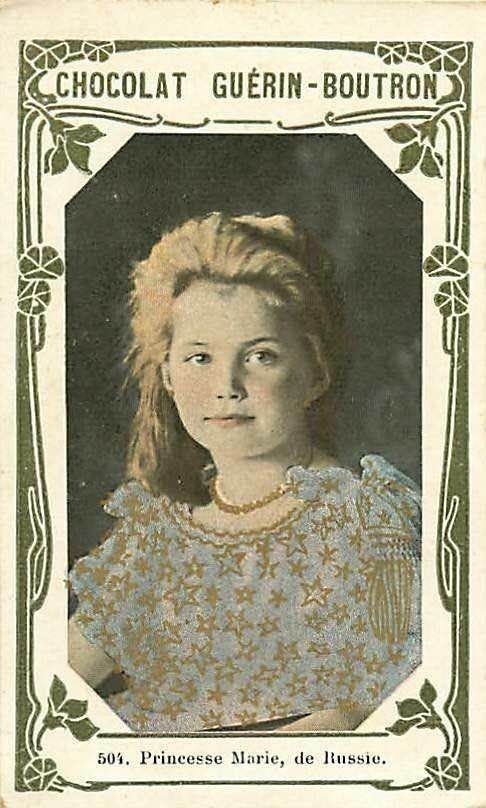
Grand Duchess Maria Nikolaevna
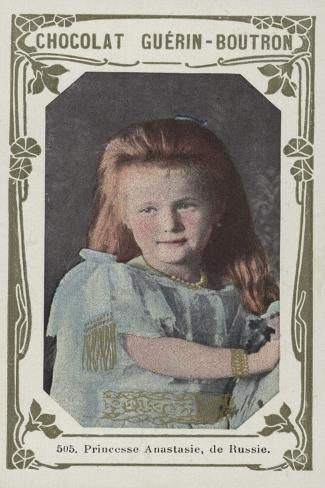
Grand Duchess Anastasia Nikolaevna
#princess mary#mary princess royal#duchess cecilie of mecklenburg-schwerin#crown princess cecilie of prussia#grand duchess eleonore of hesse#princess eleonore of solms-hohensolms-lich#empress eugenie#eugenie de montijo#princess marie louise of hanover#princess marie louise of baden#grand duchess olga nikolaevna#grand duchess tatiana nikolaevna#grand duchess maria nikolaevna#grand duchess anastasia mikhailovna#chocolate cards
14 notes
·
View notes
Text
Portraits of Romanovs (and Relations) by Nicholas Panagiotti Zarokilli
Nicholas Pannagiottis Zarokilli was born in Turkey in 1879. He was a painter particularly fond of creating pictures of beautiful women. From 1912 to 1920, Zarokilli produced paintings for publications like MoToR, Modern Priscilla, Women’s Home Companion, The Green Book, McCall’s, and The Saturday Evening Post.
He also designed World War I posters. The United States needed money for the war, so the artist created posters to try and encourage people to give for the cause.
Zarokilli was known well for his dry-point paintings. Drypoint is a printmaking technique of the intaglio family, in which an image is incised into a plate or "matrix" with a hard-pointed "needle" of sharp metal or diamond point. In principle, the method is practically identical to engraving.
He painted portraits for people such as the Queen of Spain, the Archbishop of Canterbury, Grand Duchess Anastasia, the King of Portugal, and Mr. and Mrs. Solomon Guggenheim. Landscapes were also his love, painting the cities of Venice, Madrid, and Seville.
The following is his rendering of several members of the Romanov family (and other relations.) I have seen some of these here and there before (several of you have them in your Tumblrs and always admired them; I think he captures the likenesses admirably. I found the ones here together and identified on the British Museum website (they were done between 1920 and 1922.)
These are the names of the easily recognizable "personages" in the paintings in the order they appear below:
Prince Felix Yusupof (wearing a suit)
Prince Felix Yusupof (head)
Princess Irina Alexandrovna
Grand Duke Alexander Mikhailovich (sitting)
Grand Duke Alexander Mikhailovich (bust)
Prince Andrei Alexandrovich
Prince Feodor Alexandrovich
Grand Duchess Anastasia Mikhailovna
Grand Duke Kyril Vladimirovich
Grand Duchess Maria Pavlovna the Younger
Queen Marie of Romania (born Princess Marie Alexandra Victoria of Edinburgh) - Granddaughter of Queen Victoria
Queen Victoria Eugenie of Spain (born Princess Victoria Eugenie Julia Ena of Battenberg (youngest granddaughter of Queen Victoria, Hessian Princess through the morganatic Battenberg line)



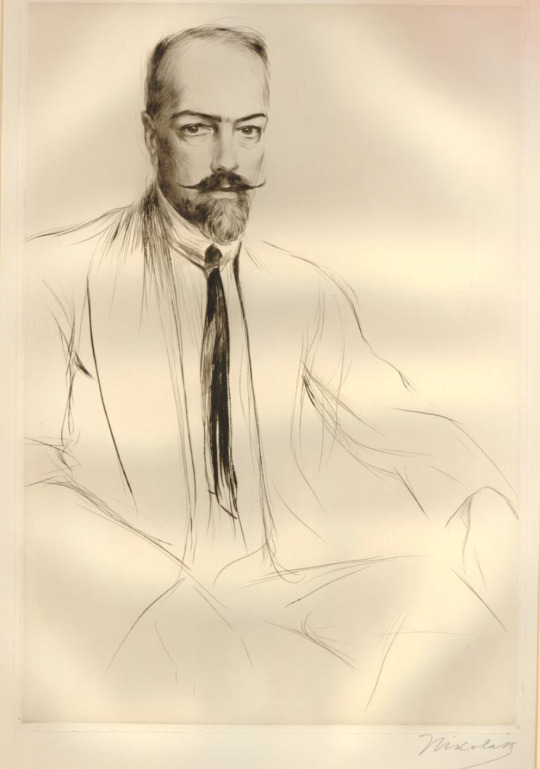
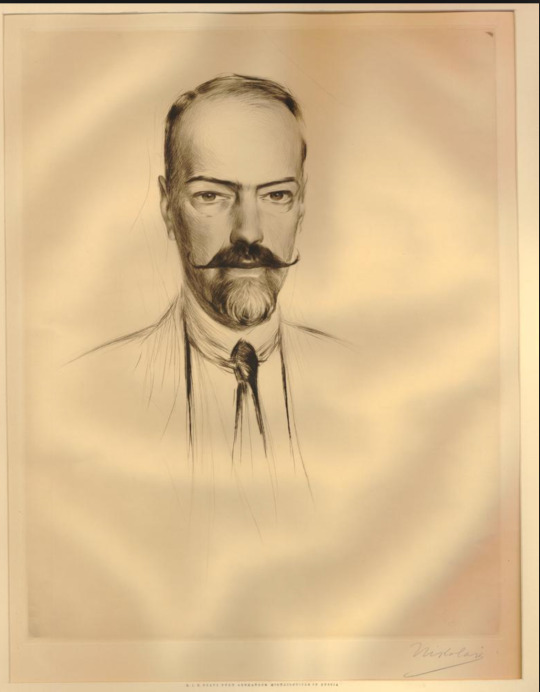

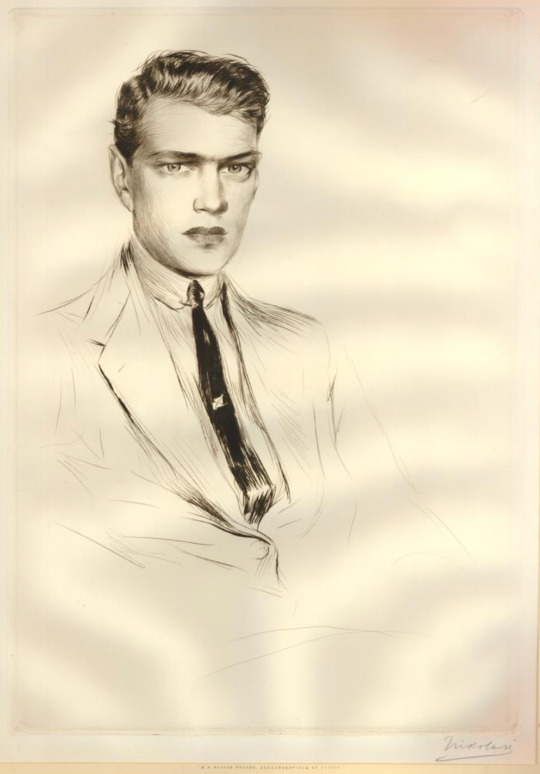


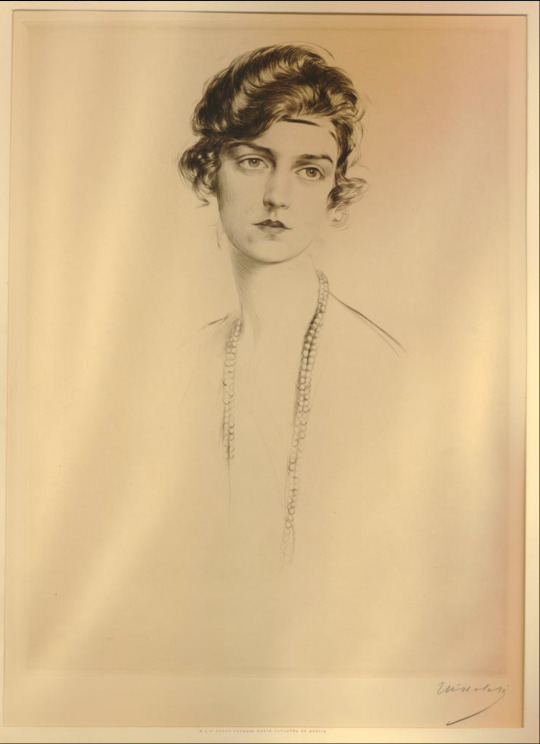

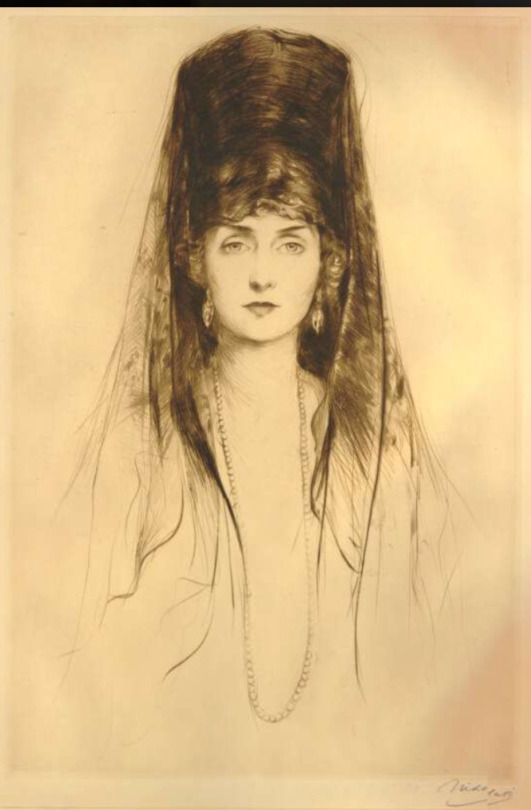
References
N.P. Zarokilli Archives | The Saturday Evening Post
Nicholas Panagiotti Zarokilli | British Museum
#Nicholas Panagiotti Zarokilli#Prince Felix Yusupov#Princess Irina Yusupov#Grand Duke Alexander Mikhailovich#Grand Duchess Anastasia Mikhailovna#Prince Andrei Alexandrovich#Prince Feodor Alexandrovich#Grand Duke Kyril Vladimirovich#Grand Duchess Maria Pavlovna the Younger#Queen Marie of Romania#Queen Victoria Eugenia of Spain#Romanov dynasty
41 notes
·
View notes
Text
1913 Anastasia Mikhailovna de Torby, Philip de László (location ?). From tumblr.com/la-belle-histoire/745161897381445633/portrait-of-anastasia-mikhailovna-de-torby-philip? 608X960

#1910s fashion#1913 fashion#Belle Époque fashion#Edwardian fashion#Anastasia Mikhailovna de Torby#de László#neo-Directoire#hat#off-shoulder neckline#straight neckline#quarter-length sleeves#full sleeves#close skirt#wrap#shoes
4 notes
·
View notes
Photo
Duchess Cecilie Auguste Marie of Mecklenburg-Schwerin (20 September 1886 – 6 May 1954) was the last German Crown Princess and Crown Princess of Prussia as the wife of Wilhelm, German Crown Prince, the son of Wilhelm II, German Emperor.
Cecilie was a daughter of Frederick Francis III, Grand Duke of Mecklenburg-Schwerin and Grand Duchess Anastasia Mikhailovna of Russia. She was brought up with simplicity, and her early life was peripatetic, spending summers in Mecklenburg and the rest of the year in Southern France. After the death of her father, she traveled every summer between 1898 and 1904 to her mother's native Russia. On 6 June 1905, she married German Crown Prince Wilhelm. The couple had four sons and two daughters. Cecilie, tall and statuesque, became popular in Germany for her sense of style. However, her husband was a womanizer and the marriage was unhappy.
After the fall of the German monarchy, at the end of World War I, Cecilie and her husband lived mostly apart. During the Weimar Republic and the Nazi period, Cecilie lived a private life mainly at Cecilienhof Palace in Potsdam. With the advance of the Soviet troops, she left the Cecilienhof in February 1945, never to return. She settled in Bad Kissingen until 1952 when she moved to an apartment in the Frauenkopf district of Stuttgart. In 1952, she published a book of memoirs. She died two years later.

Crown Princess Cecilie of Prussia, 1908 by Caspar Ritter (German-born Swiss, 1861–1923)
#history#art#clothing#german empire#kingdom of prussia#grand duchy of mecklenburg-schwerin#germany#mecklenburg-vorpommern#brandenburg#potsdam#cecilienhof#ww1#german revolution of 1918-1919#duchess cecilie of mecklenburg-schwerin#wilhelm german crown prince#wilhelm ii#frederick francis iii#grand duchess anastasia mikhailovna#caspar ritter#house of mecklenburg
481 notes
·
View notes
Link
Grand Duchess Anastasia Mikhailovna of Russia (1860-1922) was a member of the Romanov dynasty, known for her charity work and involvement in the Russian Revolution.
Link: Grand Duchess Anastasia Mikhailovna of Russia
#Grand Duchess Anastasia Mikhailovna of Russia#birthday#born today#famous birthday#famous birthdays#1860#July28
1 note
·
View note
Text

Grand Duchess Anastasia Mikhailovna of Mecklenburg-Schwerin, nee of Russia.
23 notes
·
View notes
Text
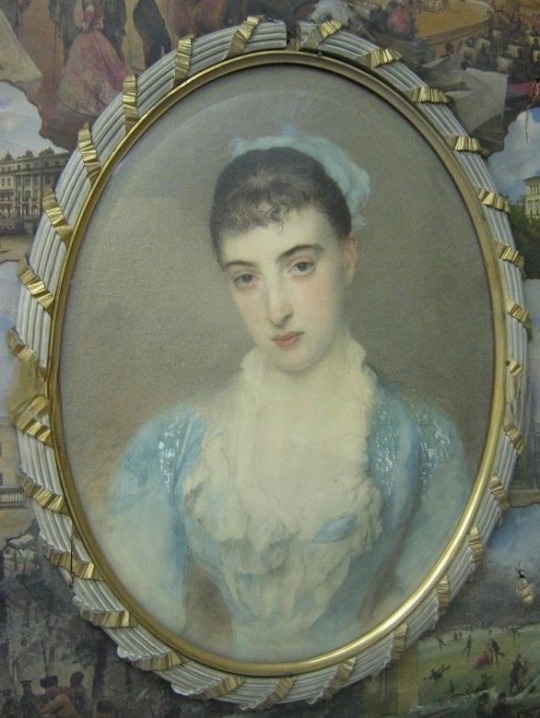
Grand Duchess Anastasia Mikhailovna of Russia by Etlinger.
65 notes
·
View notes
Photo
Princess Victoria Louise was the only daughter of Wilhelm II, the last Keiser of Prussia (one of her children was Frederica of Hanover, Queen of the Hellenes); Duchess Cecilie of Mecklenburg-Schwerin was the daughter of Frederick Francis III, Grand Duke of Mecklenburg -Schwerin and Grand Duchess Anastasia Mikhailovna Romanova. She became the last Crown Princess of Germany when she married the first son of Wilhelm II. Cecilie never reigned.




Sisters-in-law, Princess Victoria Louise of Prussia and German Crown Princess Cecilie, Crown Princess of Prussia
#russian history#romanov dynasty#german royalty#Crown Princess Cecilie of Germany#Princess Victoria Louise of Prussia#Grand Duke Frederick Francis III of Mecklenburg Schwerin#Grand Duchess Anastasia Mikhailovna#Emperor Wilhelm II
375 notes
·
View notes
Text
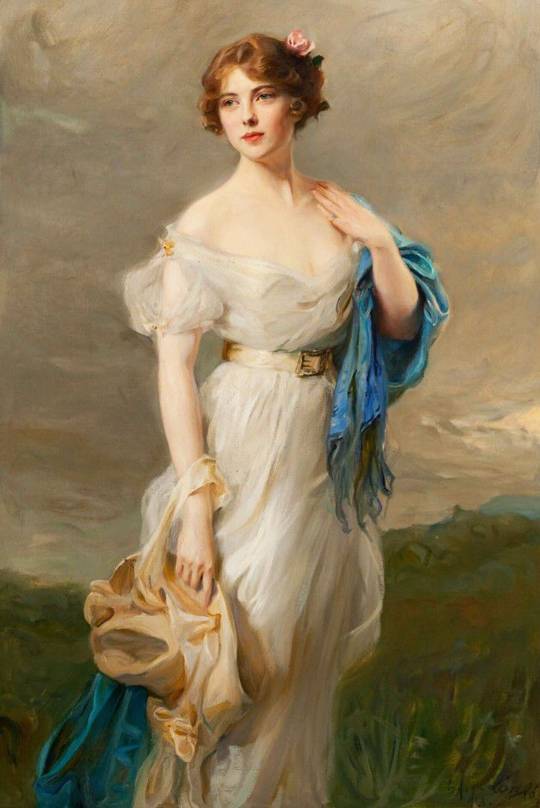
#Philip Alexius de László#Anastasia de Torby#anastasia#zia wernher#racehorse owner#1900s#Anastasia Mikhailovna de Torby#art#painting#countess#philip de lászló
8 notes
·
View notes
Note
The dancers I follow at Bolshoi are currently scheduled for the following at the moment:
La Bayadere: Yaroslavna Kuprina: Gamzatti Maria Koshkaryova: Gamzatti Sofia Maymula: First variation (kingdom of Shades) X2
La Fille du Pharaon: Elizaveta Kokoreva: Aspicia Yaroslavna Kuprina: Congo X2 & The Fisherman's Wife Elisabetta Nallin: Pas d'action (second variation) & Neva Sofia Maymula: Pas d'action (second variation) Maria Zakota: Pas d'action (second variation) X2 Maria Koshkaryova: The Fisherman's Wife
Swan Lake: Maria Koshkaryova: Friends to the prince X2 Yaroslavna Kuprina: Friends to the prince & Waltz Anastasia Smirnova: Friends to the prince Elisabetta Nallin: Waltz & Three swans X2 Darina Moseyeva: Three swans X2
La Sylphide: Elisabetta Nalin: Sylph Master and Margarita: Diana Vishneva: Margarita The Bright Stream: Elizaveta Kokoreva: Ballerina Darina Moseyeva: Zina's friends X3 Yaroslavna Kuprina: Zina's friends X3
The Flames of Paris: Maria Koshkaryova: Jeanne Elizaveta Kokoreva: Jeanne Anastasia Smirnova: Mireille de Poitiers Sofia Maymula: Amour in the ballet Rinaldo and Armida Darina Moseyeva: Friends to Armida in the ballet Rinaldo and Armida
The Seagull: Svetlana Zakharova: Irina Nikolaevna Arkadina X2 Elizaveta Kokoreva: Nina Mikhailovna Zarechnaya X2
The Tempest: Darina Moseyeva: Cerera
I don't watch the Bolshoi as closely, but I'll add that Margarita Strainer and Ulyana Moksheva impress me quite a bit. I'm am soooooo curious about Kuprina's debut as Gamzatti. She has the best teacher at the Bolshoi, and from what I've seen of her in Raymonda and Swan Lake, she looked lovely.
7 notes
·
View notes
Text







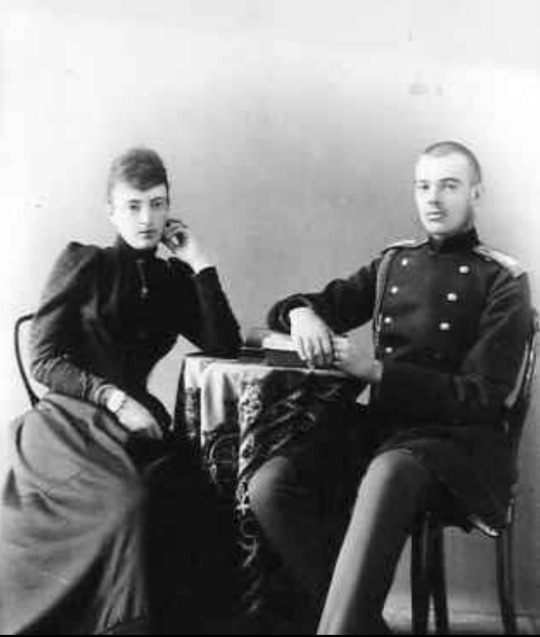
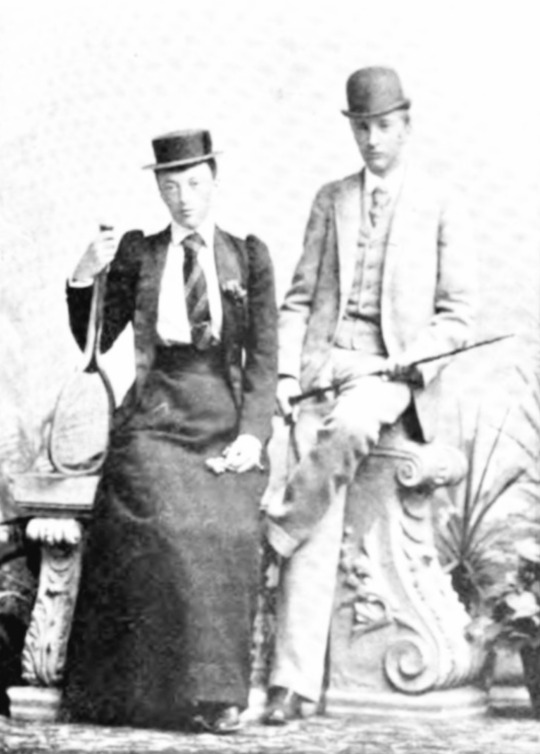


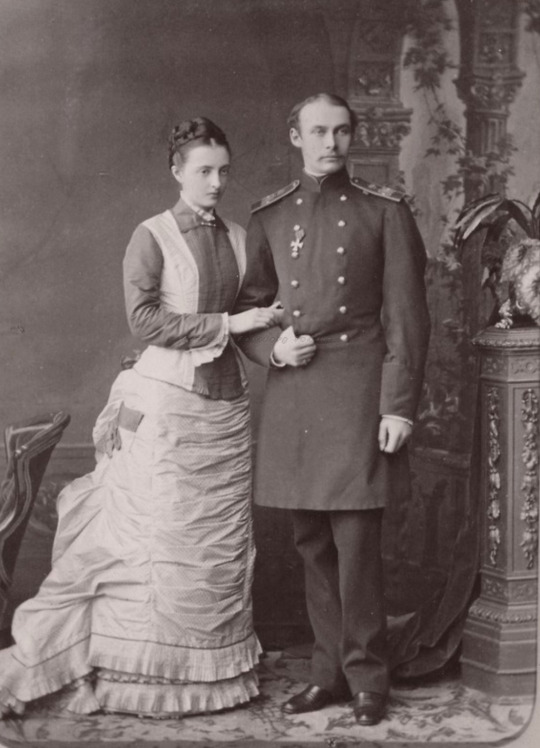

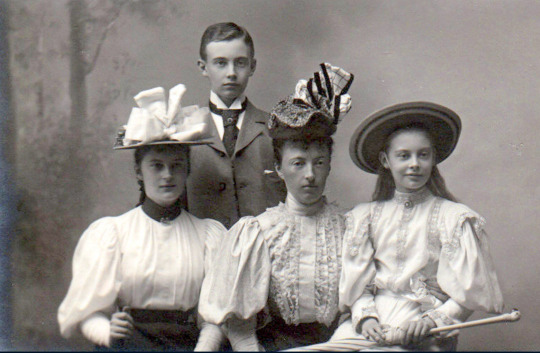



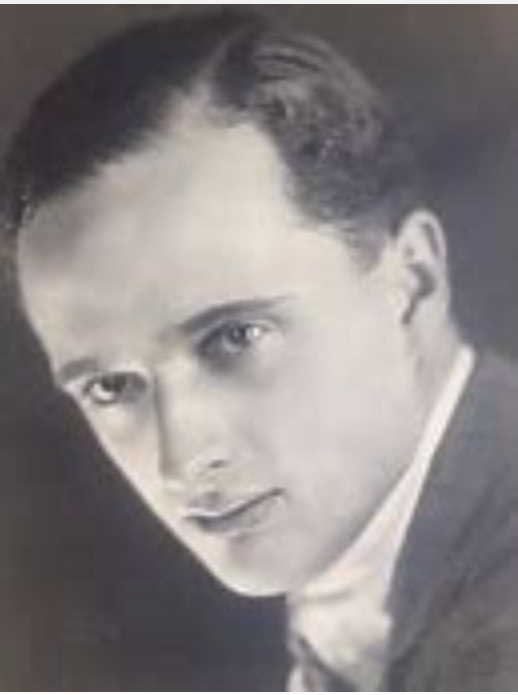


Photographs: 1. Grand Duke Mikhail Nicholayevich and his wife, Grand Duchess Olga Fyodorovna, with their two eldest children, Grand Duke Nicholas Mikhailovich and Grand Duchess Anastasia Mikhailovna; 2 and 3: Anastasia as a young girl; 4 and 5: Anastasia as a young woman. In one of the photos, she is wearing Russian court dress; 6. Anastasia with her brother Grand Duke Mikhail Mikhailovich (Miche-Miche); 7. Anastasia with her brother Grand Duke Georgiy Mikhailovich; 8. Anastasia with her brother Grand Duke Sergei Mikhailovichl 9. Anastasia with her youngest brother, who died at twenty, Grand Duke Alexis Mikhailovich; 10. Anastasia with her brother Grand Duke Alexander "Sandro" Mikhailovich; 11. Anastasia with her niece Princess Irina Alexandrovna; 12 and 13; Two photos of Anastasia with her fiancee/husband Grand Duke Frederick Francis III of Mecklenburg-Schwerin; 14. Anastasia with her three children; 15 and 16: Two pictures of Anastasia; 17: Anastasia's three children and their spouses: From left to right: Her daughter Alexandrine of Mecklenburg-Schwerin with the future King Christian X of Denmark, Her son, Frederick Francis IV with Alexandra of Hanover and Cumberland, and her daughter Cecilie of Mecklenburg-Schwerin with Crown Prince Wilhelm; 18. Her illegitimate son Alexis Louis de Wenden; 19: Villa Wenden in Nice; 20. The formidable Grand Duchess Anastasia Mikhailovna.
The other Anastaisa
Grand Duchess Anastasia Mikhailovna was born in 1860, the second child and only daughter of Grand Duke Mikhail Nicholaevich and Grand Duchess Olga Feodorovna (nee Princess Cecilie of Baden.) Anastasia was a granddaughter of Nicholas I. The better-known Anastasia (the daughter of Nicholas II) would be born a little over a half-century later, promising to be just as indomitable as her predecessor (she did not have the chance to fulfill that promise.)
Stasi (as her brothers called Anastasia Mikhailovna) was her father's favorite child. Her brothers worshipped her. Her mother was the disciplinarian of the house. The boys were allowed to see their sister only on Sundays.
Anastasia married Frederick Francis III, Grand Duke of Mecklenburg-Schwerin, at 19. Frederick Francis was Grand Duchess Maria Pavlovna, the Elder's brother. He had very poor health throughout his life; he had asthma and multiple allergies and rashes, and he needed to live during extended periods in the warmer climate of the Mediterranean rather than in Northern Europe; this was just fine with Anastasia, who would never adjust to her adoptive country or gain the affection of the people there. The couple established Villa Wenden in the South of France, and she would live in that area of the world most of her life. Frederick's homosexuality was known throughout Europe, but the couple seemed to have gotten along well. Anastasia spent lavishly at the casinos, and Frederick Francis was glad to provide her with the funds. When the Grand Duke died, she said: "On this day, I have lost my best friend."
They had three children, and all married very well:
Duchess Alexandrine of Mecklenburg-Schwerin (1879 –1952); married King Christian X of Denmark. They had two sons.
Frederick Francis IV, Grand Duke of Mecklenburg-Schwerin (1882 –1945), married Princess Alexandra of Hanover and Cumberland. They had five children.
Duchess Cecilie of Mecklenburg-Schwerin (1886 –1954.) She married Wilhelm, the German Crown Prince. They had six children.
Up to the death of her husband, Anastasia's life had transcurred without scandal. However, a few years later, she began an affair with Vladimir Alexandrovitch Paltov, her secretary. She soon became pregnant by him and attempted to hide that fact by claiming she was suffering from a tumor. She claimed to have chickenpox when she delivered the child. Her son, Alexis Louis de Wenden, was born in Nice in 1902. She was able to bring him up herself and wrote to him daily when he was away at school. After the scandal became public, she was advised never to live near her daughter, now the Crown Princess of Germany (she was given special permission to visit her daughter for the birth of her first grandson.)
After her father had a stroke, he went to live with Stasi in Villa Wenden. As the senior member of the Romanov clan, "Uncle Misha" received many visitors, including the Tsar. At least one of her brothers was in residence at Villa Wenden at any given time. When her father died in 1909, Anastasia inherited an enormous fortune. She continued to live as she wished, gambling heavily, going to the theater, and dancing.
World War I split the family apart. Her son was the reigning Grand Duke of Mecklenburg-Schwerin, her daughter was the German Emperor's daughter-in-law, she was a Russian Grand Duchess, and her Russian family was fighting on the opposite side. She settled in neutral Switzerland. The war cost her son and daughter their (prospective) crowns. After the war, she returned to Nice. There she founded a charity to help Russian exiles. Vladimir Paltov was the charity's president, perhaps indicating that the relationship continued. She lived in Villa Fantasia in Eze, which is near Cannes.
Anastasia died suddenly after suffering a stroke in 1922. She rests in Ludwigslust next to her husband. All of her children have living descendants today, including her illegitimate son. She certainly lived as she wished. Which is something that the other Anastasia would have probably done should she have been given the chance.
#russian history#imperial russia#romanov family#Grand Duchess Anastasia Mikhailovna#villa Wenden#Grand Duke Mikhail Nikolayevich#Grand Duke Georgie Mikhailovich#Grand Duke Mikhail Mikhailovich#Grand Duke Alexander Mikhailovich#Grand Duke Nicholas Mikhailovich#Grand Duke Alexis Mikhailovich#Grand Duchess Olga Fyodorovna#Frederick Francis III Grand Duke of Mecklenburg Schwerin#Frederick Francis IV Grand Duke of Mecklenburg Schwerin#Duchess Cecilie of Mecklenburg Schwerin#Christian X of Denmark#Crown Prince Wilhelm of Germany#Alexis Louis de Wenden
21 notes
·
View notes